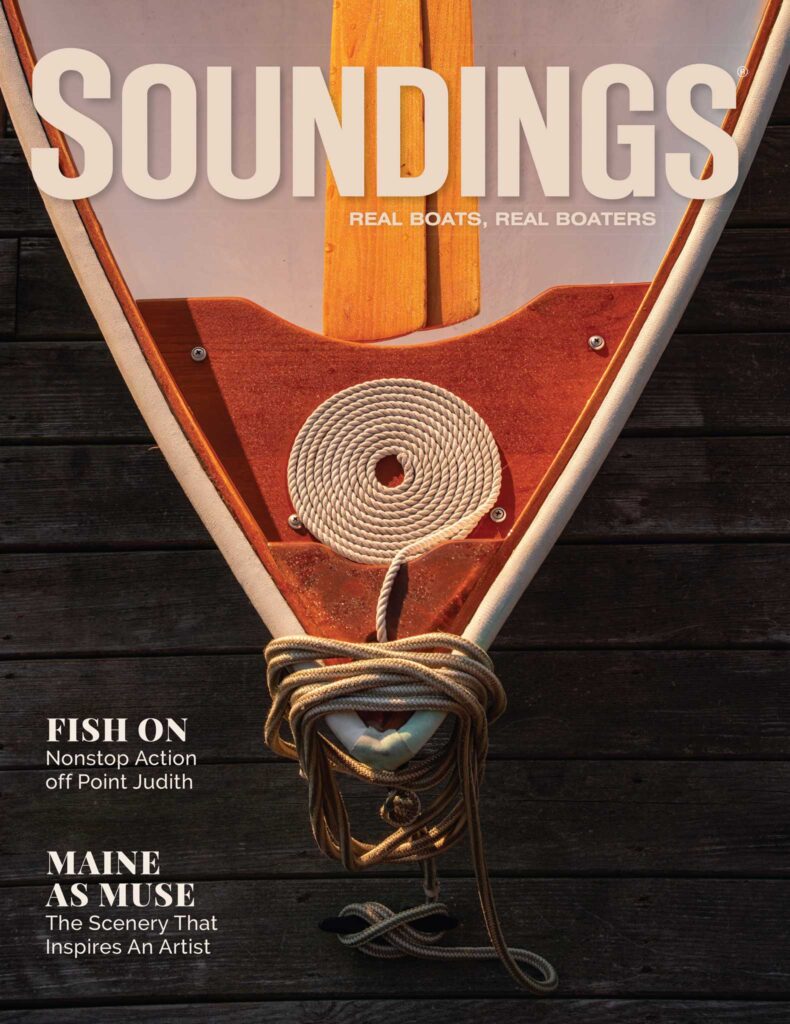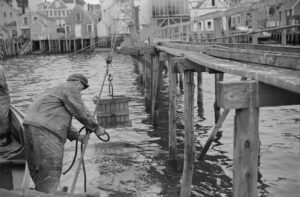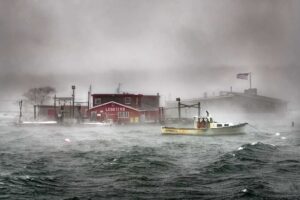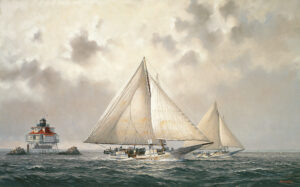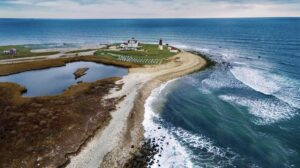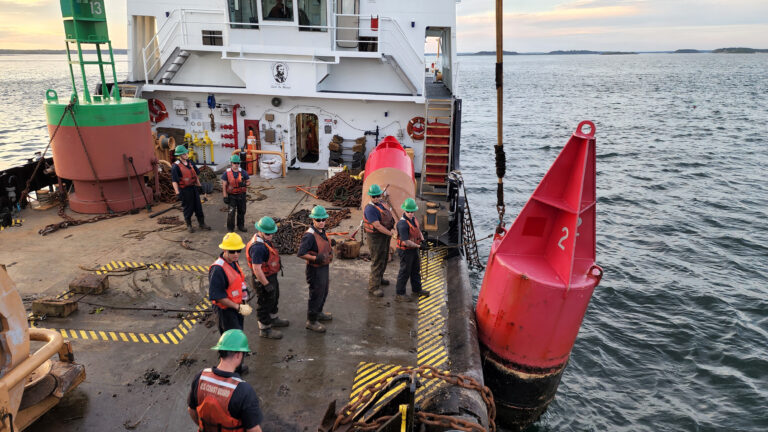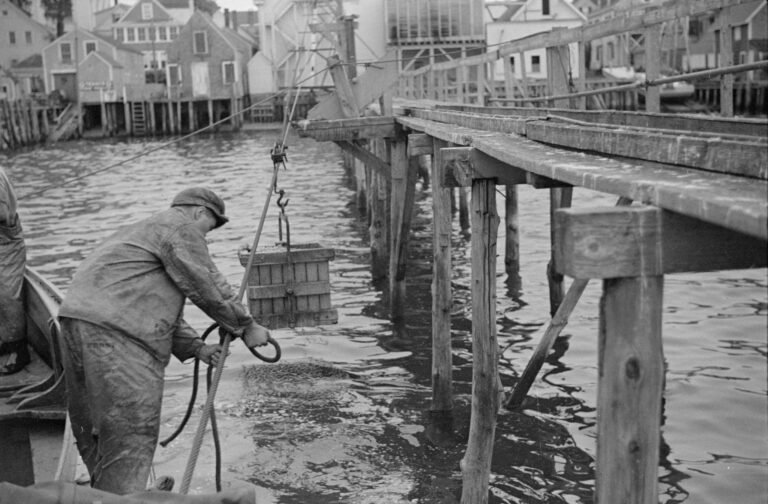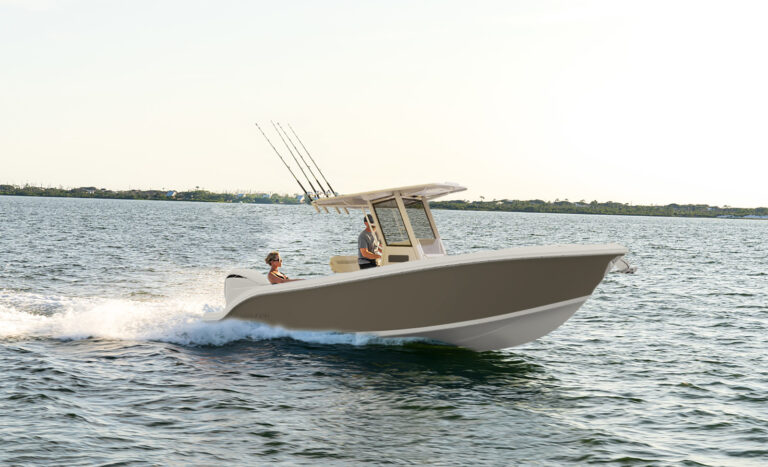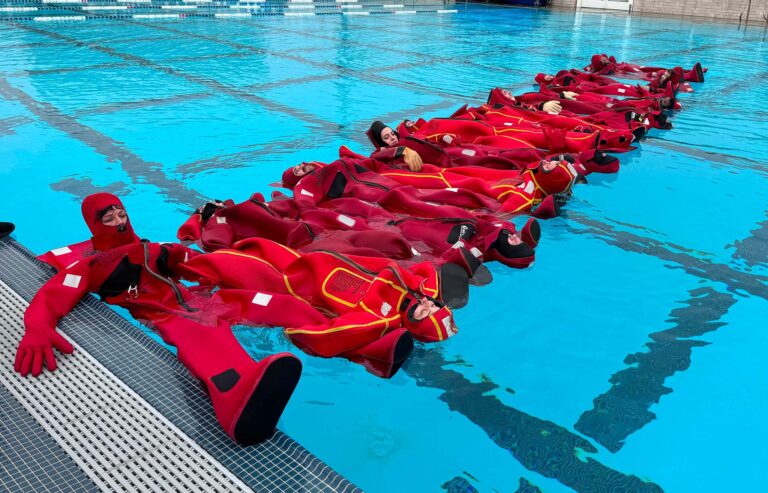
A Boston Whaler Sakonnet hugs the rocks, putting a pair of anglers at the center of some serious fishing action. When this image came out in a 1962 company sales brochure, there was no other boat like the Boston Whaler in the world.
She’d come to life starting in the late 1950s, when boatbuilder (and Harvard graduate) Dick Fisher, working with the now-legendary naval architect C. Raymond Hunt, combined a new building material with a radical hull design to create a 13-foot prototype. The odd-looking, polyurethane-foam-based craft with a tri-hull bottom and a single outboard engine survived a grueling, 120-mile sea trial, running from Cohasset to New Bedford in Massachusetts.
In 1958, Fisher began selling the boat under the Boston Whaler name. In 1962, the single-outboard fleet expanded with a newly designed, 16-foot, 7-inch hull that would soon put Whaler on the map.
The Sakonnet shown here was the builder’s pride, “a luxuriously practical sport fishing vehicle,” according to the catalog, notable for a console with a reversible pilot seat, under-seat stowage and a bow platform. Other models using the new hull included the Nauset; it had a fixed seat, full console with a windshield, and a front seat, along with lights and single-lever engine controls. The Eastport was similar, but came with an aft seat and cushions for the comfort of guests.
Boston Whaler touted the “unsinkable” hull’s sea-handling qualities and versatility with some flowery language: “They can negotiate in safety and reasonable comfort the wildest waters ever used for pleasure boating; yet they are adaptable to more casual types of water sport.” Those wild waters might include “spruce-fringed crystal lakes, shallow bonefish flats and ocean reefs of Florida, the bluefish grounds off Martha’s Vineyard, or the salmon fishery of the far Northwest.”
Today, Boston Whaler is one of the world’s premier boatbuilders, and it acknowledges that its reputation was largely built on those Sakonnet, Eastport and Nauset models, as well as all the hybrid versions that have followed.
This article originally appeared in the November 2019 issue.

